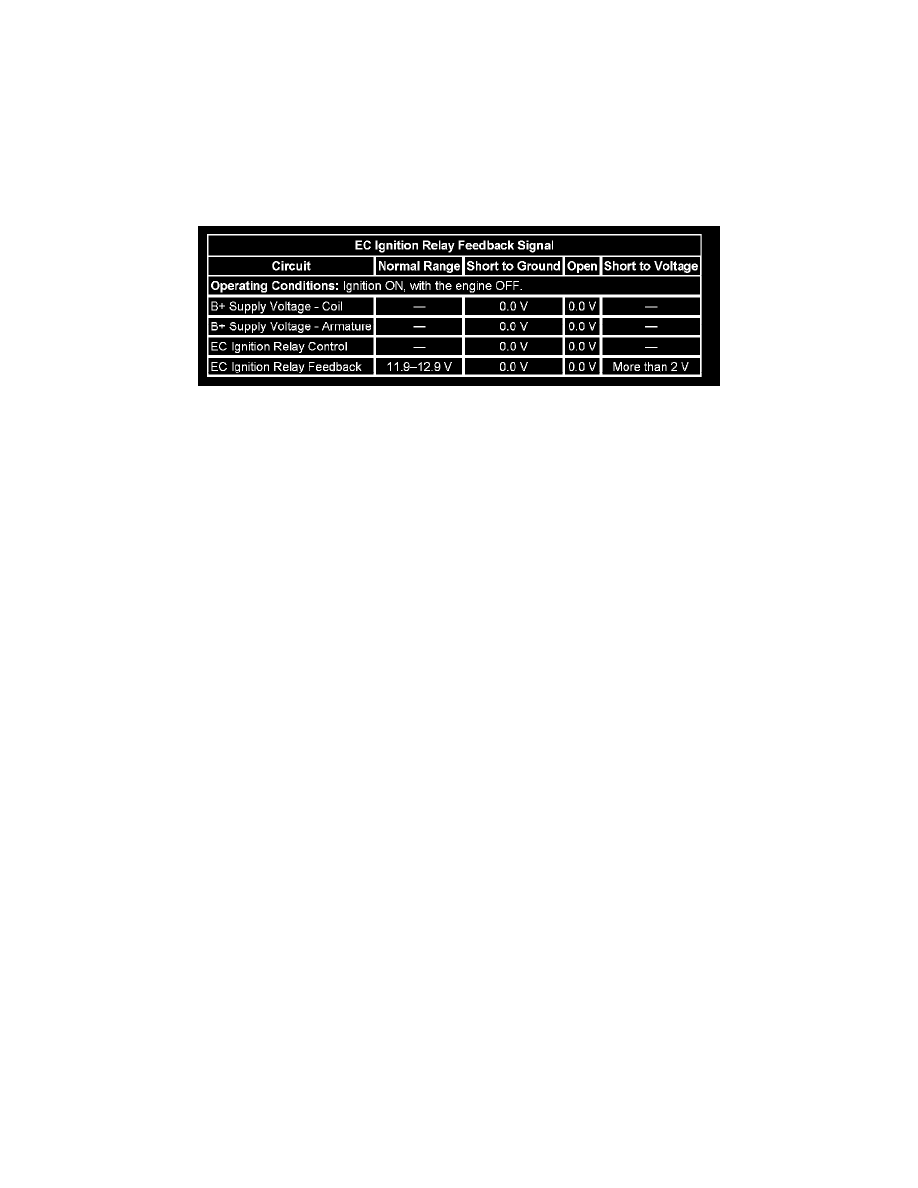CTS-V V8-6.0L VIN U (2006)

Main Relay (Computer/Fuel System): Testing and Inspection
MAIN RELAY CIRCUIT DIAGNOSIS
DIAGNOSTIC FAULT INFORMATION
IMPORTANT: Always perform the Diagnostic System Check - Vehicle prior to using this diagnostic procedure. See: Testing and
Inspection/Diagnostic Trouble Code Tests and Associated Procedures
TYPICAL SCAN TOOL DATA
EC Ignition Relay Feedback Signal
CIRCUIT/SYSTEM DESCRIPTION
The main relay is a normally open relay. The relay armature is held in the open position by spring tension. Battery positive voltage is supplied directly
to the relay coil and the armature contact at all times. The engine control module (ECM) supplies the ground path to the relay coil control circuit via
an internal integrated circuit called an output driver module (ODM). The ODM output control is configured to operate as a low side driver for the
main relay. The ODM for the main relay also incorporates a fault detection circuit, which is continuously monitored by the ECM. When the ECM
commands the main relay ON, ignition 1 voltage is supplied to the following fuses in the underhood fuse block:
-
EVEN INJ/Coil Fuse
-
ODD INJ/Coil Fuse
-
TOS Fuse
-
Pre O2/CAM Fuse
-
Post O2 Fuse
-
ECM Fuse
The ignition 1 voltage that is supplied to the ECM through the ECM fuse, provides power to the internal ECM circuits associated with the throttle
actuator control (TAC) operation. The ECM also monitors the voltage level on the ignition 1 voltage circuit to confirm that the main relay contacts
have closed.
DIAGNOSTIC AIDS
-
This test procedure requires that the vehicle battery has passed a load test and is completely charged. Refer to Battery Inspection/Test. See:
Starting and Charging/Testing and Inspection/Component Tests and General Diagnostics/Battery Inspection/Test
-
When disconnecting electrical connectors or removing fuses and relays from a fuse block, always inspect the component electrical terminals for
corrosion and the mating electrical terminals for tightness.
-
Use the J 35616 Connector Test Adapter Kit for any test that requires probing the underhood fuse block terminals, component wire harness
terminals, or the ECM wire harness connector terminals.
CIRCUIT/SYSTEM VERIFICATION
1. With the ignition ON, engine OFF, command the main relay ON and OFF several times using the scan tool output control function. You should
either hear or feel the relay click with each command.
2. With the ignition ON, engine OFF, probe both test points of each of the following fuses:
-
EVEN INJ/Coil Fuse
-
ODD INJ/Coil Fuse
-
TOS Fuse
-
Pre O2/CAM Fuse
-
Post O2 Fuse
-
ECM Fuse
-
The test lamp should illuminate on at least one test point of each fuse. If the test lamp does not illuminate continue with Circuit/System
Testing.
-
If the vehicle passes the Circuit/System Verification test, refer to Testing for Intermittent Conditions and Poor Connections. See: Testing
and Inspection/Component Tests and General Diagnostics
CIRCUIT/SYSTEM TESTING
1. With the ignition OFF, remove the main relay from the underhood fuse block.
